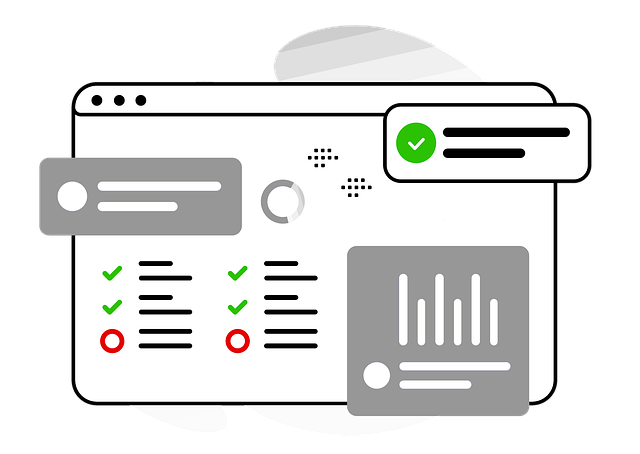Implementing a Business Info Schema organizes and unlocks structured data, enhancing user understanding and experiences through clear brand identity presentation and accurate knowledge panel displays on search engines. Key entity types like Organization, Person, Location are identified, relationships between entities are defined, standardized data terminology is established, and metadata discoverability is improved for better online visibility and engagement.
In today’s competitive landscape, organizing and understanding business information is crucial for effective brand management. Implementing a robust Business Info Schema (BIS) offers a structured approach to describe your organization, unlocking valuable insights through structured data. This article guides you through defining the schema, identifying key entity types, establishing relationships, adopting standardized terminology, and creating a knowledge panel display framework. By following these steps, you’ll gain enhanced brand understanding and operational efficiency.
- Define Business Info Schema: Unlocking Structured Data
- Identify Key Entity Types for Your Organization
- Establish Relationships Between Entities
- Implement Standardized Data Terminology
- Create a Knowledge Panel Display Framework
- Benefits: Enhanced Brand Understanding and Efficiency
Define Business Info Schema: Unlocking Structured Data

Implementing a Business Info Schema is a powerful strategy to unlock and organize structured data within your organization. This schema serves as a framework, enabling you to present critical business information in a consistent and machine-readable format. By defining key aspects such as company details, services offered, and contact information, the Business Info Schema ensures that all relevant data is captured and readily available for various applications.
The use of structured data, facilitated by schemas like Organization JSON-LD and About Us Schema, enhances brand understanding by providing a clear picture of the organization’s identity and offerings. This structured approach allows search engines to interpret and display your business information accurately in knowledge panels, enriching user experiences and potentially increasing engagement.
Identify Key Entity Types for Your Organization

When implementing a Business Info Schema for your organization, identifying key entity types is the first crucial step. These entities represent the fundamental building blocks of your business, such as `Organization`, `Person`, and `Location`. For instance, an `Organization` schema could include details about your company’s name, logo (`Logo Markup`), physical address, phone number (Contact Info Schema), and operational hours. Each entity should be meticulously defined to capture all relevant business information.
Additionally, considering specific secondary aspects like the `Organization JSON-LD` format ensures a structured and machine-readable representation of your data. This not only enhances brand understanding internally but also improves the display of your knowledge panel on search engines, making your organization’s information more accessible and organized for users.
Establish Relationships Between Entities

Establishing clear relationships between entities within your organization is a key step in implementing a Business Info Schema. This involves defining connections between different departments, roles, and even external partners. By doing so, you create a structured network that mirrors your business operations and hierarchy. For instance, linking employees to their respective teams and positions enhances the understanding of your organizational structure. Similarly, connecting products or services with associated brands and categories improves the overall brand landscape.
This relational aspect is crucial for presenting a unified view of your business. When applied correctly, it enables consistent and accurate representation of your organization, known as Structured Brand Data. Using markup languages like Logo Markup or Contact Info Schema can further enhance this process. These schemas provide a standardized way to embed essential business info into digital content, making it easily parseable by search engines and other web applications, thus improving the accessibility and usability of your brand data.
Implement Standardized Data Terminology

Implementing standardized data terminology is a critical step in any effort to enhance your organization’s digital representation and brand understanding. By adopting a consistent vocabulary across all data elements, from product descriptions to team roles, you create a unified language that facilitates effective communication both internally and externally. This approach ensures that everyone—from marketing teams to developers—is on the same page when structuring knowledge panels or crafting content for your About Us Schema.
Standardization goes beyond mere clarity; it also promotes efficiency in data management. Consistent terminology simplifies the process of updating and maintaining structured brand data, such as Logo Markup, ensuring that changes are applied uniformly across all relevant platforms. This not only saves time but also reduces errors, enhancing the overall quality of your digital assets and contributing to a more professional online presence.
Create a Knowledge Panel Display Framework

To create an effective Knowledge Panel Display Framework, start by defining your business’s core entities and relationships using Business Info Schema. This structured approach ensures that all critical data about your organization is captured in a standardized format, facilitating seamless integration with various platforms and search engines. By implementing Organization JSON-LD or Contact Info Schema, you can enrich your website’s metadata, making it more discoverable and enhancing user understanding of your brand.
This framework should encompass key components such as company name, location, operating hours, services offered, and critical contact details. Moreover, integrating Structured Brand Data allows for a deeper level of context, enabling search engines to display rich snippets that highlight your organization’s unique value proposition. This strategic approach not only improves user experience but also boosts your brand’s visibility and credibility in today’s digital landscape.
Benefits: Enhanced Brand Understanding and Efficiency

Implementing schema markup, such as Business Info Schema, offers significant advantages for any organization aiming to optimize its online presence. By adding structured data to your website using Organization JSON-LD or Contact Info Schema, you enhance brand understanding by providing search engines with detailed insights into your business. This includes crucial information like contact details, operating hours, and specific services offered—all essential elements for potential customers navigating digital platforms.
Moreover, schema markup streamlines the creation of rich knowledge panels, making your organization’s data more accessible and visually appealing to users. These panels, often displayed alongside search results, provide at-a-glance overviews, including ratings, reviews, and key services. This efficiency not only improves user experience but also increases click-through rates, driving more traffic to your site and ultimately fostering better brand engagement and conversion.
